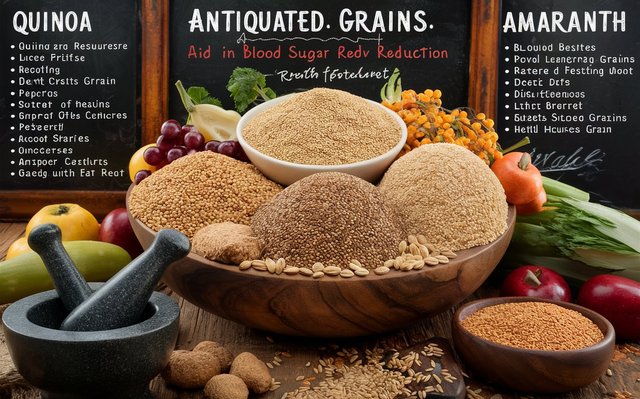To effectively manage type 2 diabetes, researchers are turning to historical precedent for guidance. A recent study that was published in Nutrition, Metabolism and Cardiovascular Diseases suggests that eating ancient grains may improve the health of those who have type 2 diabetes. These grains—brown rice, millet, and oats, among others—are well known for their lack of genetic modification, high fiber content, and beneficial phytochemicals that support a robust immune system.

How do ancient grains affect the course of diabetes?
Ancient grains may help manage diabetes, according to a thorough analysis of 29 randomised controlled trials. 1,809 people participated in the analysis, which was carried out by a group of researchers; type 2 diabetes affected most of them. The studies concentrated on blood sugar, cholesterol, and body weight as risk factors for cardiovascular disease.
According to the analysis, ancient grains—oats, brown rice, and millet in particular—showed promising outcomes in lowering blood sugar, insulin levels, hemoglobin A1c, fasting blood glucose, and cholesterol, among other diabetes markers.
Ancient grains raise blood glucose levels during a fast.
Oats, out of all the ancient grains examined, showed a significant improvement in fasting blood glucose and cholesterol for people with type 2 diabetes. Additionally, brown rice demonstrated positive effects, especially on body mass index (BMI) and HbA1c. All diabetes markers did not exhibit the same effects, though.
Despite having a considerable impact on body weight, millets need more research because of possible confounding variables. It's possible that the small sample sizes used in the studies contributed to the lack of significant improvements in diabetes markers observed with chia seeds.
Ancient grains improve the health of the metabolism
The elevated concentrations of phytochemicals and dietary fiber present in ancient grains are thought to be pivotal in enhancing metabolic well-being. These phytochemicals have anti-inflammatory and antioxidant qualities, such as flavonoids and phenolic acids, and they also help to improve lipid profiles with phytosterols.
Ancient grains have better nutritional composition and quality and have undergone less genetic modification than modern grain varieties. They have higher concentrations of dietary fiber and specific phytochemicals, which may have positive effects on insulin sensitivity, glucose metabolism, and blood sugar regulation in general.
Should diabetics consume more ancient grains?
Ancient grains have a higher fiber content, which helps reduce blood sugar spikes even though they may raise blood sugar levels. This is especially true when combined with healthy fats. Low-carb diets have the potential to maintain consistently low blood sugar levels, but they may not be long-term sustainable and may result in a deficiency of vital nutrients found in grains.